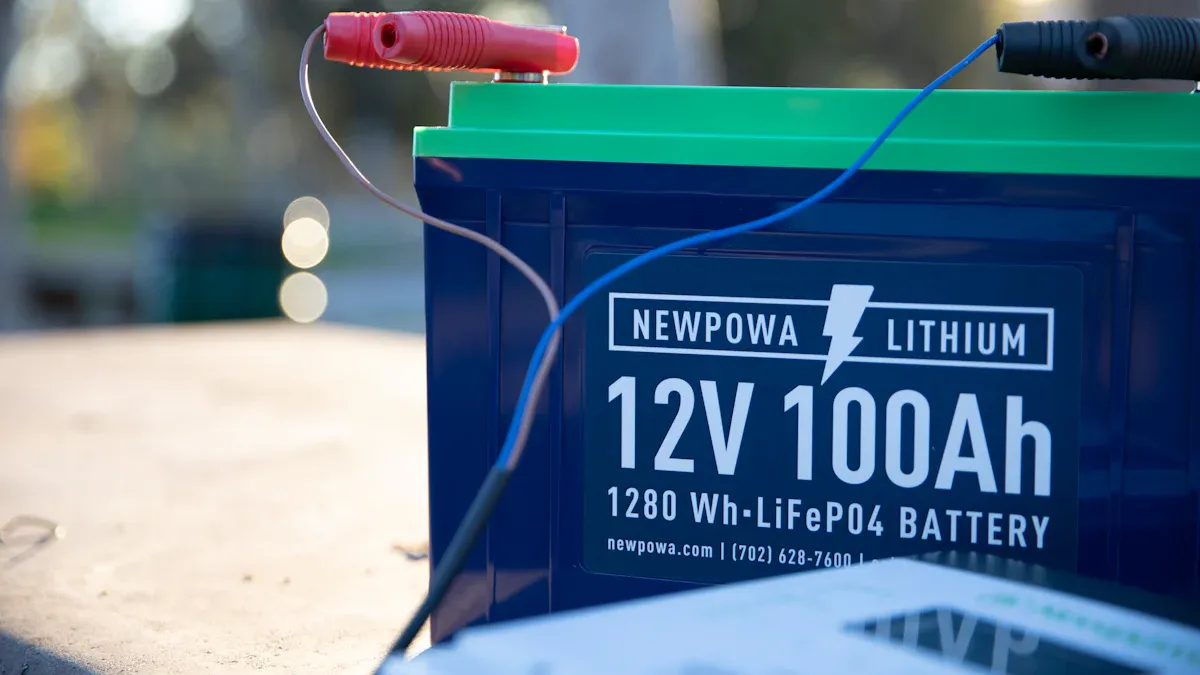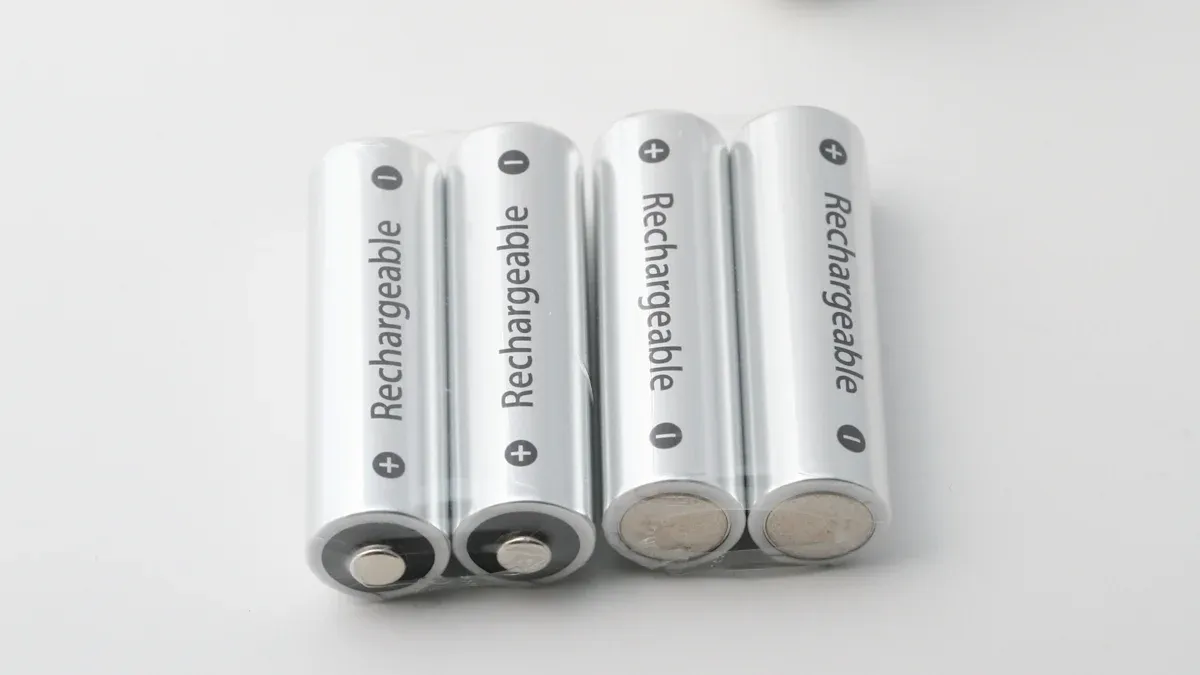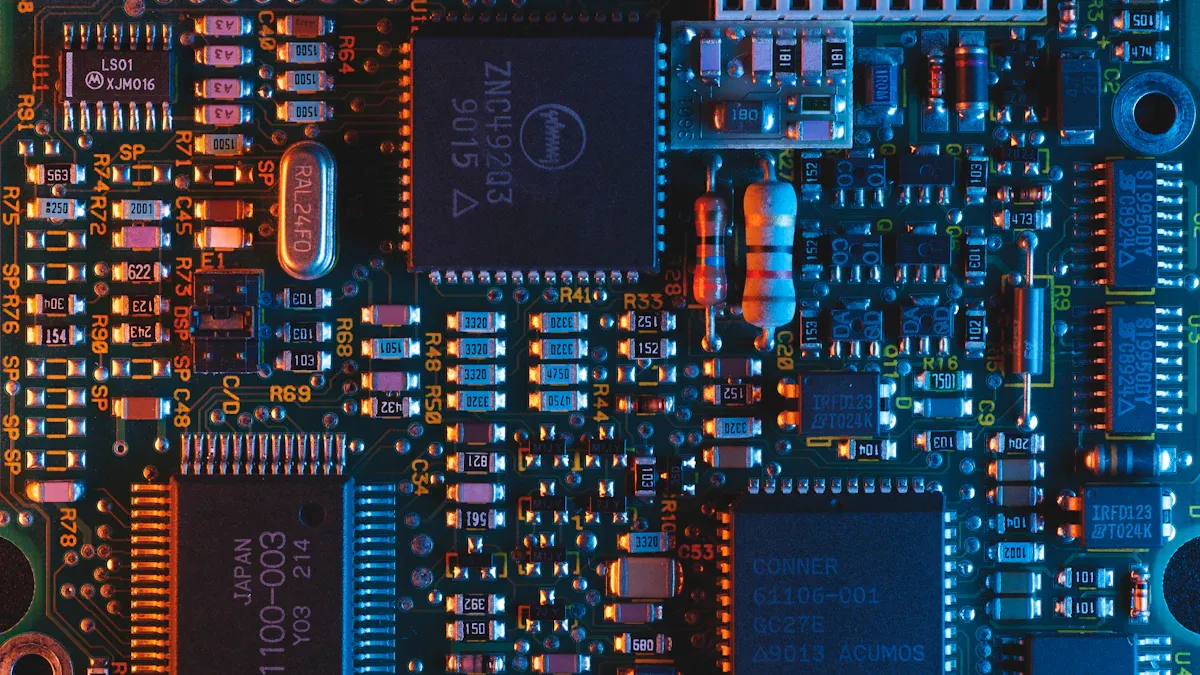

A lifepo4 battery bms serves as a smart guardian for your battery, providing essential protection against risks like overcharging, deep discharging, and overheating. By using a lifepo4 battery bms, you help prevent your LiFePO4 batteries from overheating, catching fire, or failing due to exposure to extreme temperatures or physical damage. The lifepo4 battery bms continuously monitors each cell and intervenes to stop unsafe conditions, ensuring your battery remains safe and performs reliably every time.
A LiFePO4 Battery BMS acts as a smart guardian that protects your battery from dangers like overcharging, deep discharging, overheating, and short circuits.
The BMS monitors each cell’s voltage, current, and temperature constantly, balancing cells to keep them equal and extend battery life.
It automatically stops charging or discharging when unsafe conditions occur, preventing damage and keeping your battery safe and reliable.
Cell balancing by the BMS helps your battery deliver more power and last longer by making sure no single cell limits the whole pack.
Using a BMS improves battery performance, safety, and lifespan, giving you peace of mind and better energy use every day.

You can think of a lifepo4 battery bms as the brain of your battery system. This smart device watches over every cell in your battery pack. It checks important details like voltage, current, and temperature. The BMS uses sensors and control boards to collect data and make decisions. You get a safer and more reliable battery because the BMS acts quickly when it finds a problem.
Tip: A lifepo4 battery bms does more than just monitor. It also balances the cells, making sure each one works at the same level. This helps your battery last longer and perform better.
Here are the main parts you will find in a lifepo4 battery bms:
Cell Monitoring Boards: Track voltage, current, and temperature for each cell.
Master Control Board: Collects data and manages battery performance.
Charge/Discharge Control Elements: Regulate power flow to protect the battery.
Current Shunt: Measures current to spot problems.
Sensors: Watch voltage, current, temperature, and charge level.
Communication Modules: Share battery status with other devices.
Wiring and Connections: Link all parts together.
The main purpose of a lifepo4 battery bms is to keep your battery safe and working well. You get protection from overcharging, deep discharging, short circuits, and overheating. The BMS balances the cells so they wear out evenly. It also reports important information about battery health and status.
You can see how the BMS works step by step:
It protects the battery by stopping charging or discharging if something goes wrong.
It balances the cells to keep them equal.
It reports battery health and alerts you to problems.
A lifepo4 battery bms helps you avoid damage and keeps your battery running smoothly. You get longer battery life and better performance because the BMS manages everything for you.

A lifepo4 battery bms gives your battery strong protection. You get safety from problems like overcharging, deep discharging, short circuits, and overheating. The BMS acts fast to stop these dangers before they can harm your battery or cause a fire.
Here is a table showing the main protection features and what they do:
Protection Feature | Description |
|---|---|
Overcharge Protection | Monitors battery voltage; stops charging when voltage exceeds about 3.65V to prevent damage. |
Overdischarge Protection | Disconnects load when voltage drops to about 2.5V to avoid deep discharge and internal short circuits. |
Short Circuit Protection | Detects too much current and quickly powers down to prevent damage or thermal runaway. |
Temperature Monitoring | Watches battery temperature; stops charging or reduces discharge if temperature goes outside safe limits. |
Keeps cell voltages even to maximize capacity and battery life. |
Note: The BMS uses sensors to check voltage, current, and temperature all the time. If it finds a problem, it can cut off charging or discharging, send an alert, or put the battery in sleep mode until you reset it.
You can trust the BMS to keep your battery safe. Overcharge protection stops heat buildup that can damage cells. Overdischarge protection keeps your battery from losing capacity. Short circuit protection acts instantly to avoid fire risks. Temperature monitoring prevents the battery from working when it is too hot or too cold.
Cell balancing is one of the most important jobs of your BMS. Each cell in your battery pack needs to have the same voltage and charge. If one cell gets too full or too empty, it can wear out faster or even fail. The BMS balances the cells so they all work together.
You will find two main types of cell balancing:
Passive balancing: The BMS uses resistors to remove extra energy from cells with higher voltage. This method is simple and reliable, but it wastes some energy as heat.
Active balancing: The BMS moves energy from cells with more charge to those with less. This method is faster and saves more energy, but it is more complex and costs more.
Tip: Balanced cells help your battery last longer and give you more usable energy. If your cells are not balanced, the weakest cell will limit how much energy you can use. For example, if one cell reaches its limit first, the BMS will stop charging or discharging early, so you lose capacity.
Cell balancing also keeps your battery safe. It stops any cell from being overcharged or over-discharged, which can cause heat, damage, or even fire. With good balancing, you get more cycles and better performance from your battery.
Your BMS works like a smart monitor for your battery. It checks each cell’s voltage, the total current, and the temperature inside the pack. The BMS uses special sensors for this job:
Voltage sensors measure each cell’s voltage with high accuracy.
Current sensors track how much power goes in and out.
Temperature sensors watch for hot or cold spots in the battery.
The BMS does more than just watch. It uses the data to decide when to balance cells, when to stop charging, or when to send an alert. Some advanced BMS units can even talk to your phone or computer using Bluetooth or CANBUS. You can see battery health, state of charge, and even get warnings if something is wrong.
Did you know? The BMS can log data over time. This helps you spot problems early and keep your battery healthy for years.
With a lifepo4 battery bms, you get real-time protection, balanced cells, and smart monitoring. This means your battery stays safe, lasts longer, and gives you the best performance every day.
You can see how a lifepo4 battery bms operates by following its step-by-step process during charging and discharging.
The BMS monitors the voltage of each cell as you charge your battery.
When any cell reaches about 3.65 volts, the BMS stops charging that cell to prevent overcharge. Other cells keep charging until they reach the same voltage.
During discharge, the BMS watches each cell’s voltage. If a cell drops to around 2.4 volts, the BMS disconnects the load to protect that cell from deep discharge.
The BMS balances the cells by limiting charging current to cells that are full, helping all cells reach similar voltage levels.
The system also checks for overcurrent and temperature extremes, cutting off power if needed to prevent damage.
This automatic monitoring and control keeps your battery safe and extends its life.
Tip: The BMS does all this without you needing to watch over your battery. It works in the background to keep everything running smoothly.
Your BMS connects directly to each cell in the battery pack. It uses sensors to measure voltage, current, and temperature at the cell level.
The BMS tracks each cell’s voltage to stop overcharging and deep discharging.
It monitors charging and discharging currents to avoid overcurrent and short circuits.
Balancing circuits, either passive or active, help keep all cells at similar voltage.
Relays or MOSFETs control the flow of electricity, making sure the battery connects safely.
Communication modules let the BMS report cell data and receive commands.
This close interaction lets the BMS manage charging and discharging with high accuracy.
In real life, your BMS steps in to protect your battery during risky situations.
If you accelerate quickly in an electric vehicle, the BMS limits current to prevent damage.
When temperatures get too high or too low, the BMS stops charging or activates cooling.
If a short circuit happens, the BMS reacts in microseconds to cut off power.
The BMS balances cells during every charge and discharge cycle, preventing one weak cell from ruining the whole pack.
Scenario | BMS Action |
|---|---|
Overvoltage | |
Undervoltage | Halts discharging below 2.4V per cell |
Overcurrent | Limits current to safe levels |
Short Circuit | Cuts off current instantly |
Extreme Temperature | Stops charging/discharging or activates cooling |
You get peace of mind knowing your lifepo4 battery bms works to keep your battery safe and reliable every day.
You need a BMS to keep your LiFePO4 battery safe. The BMS acts as a shield, stopping problems before they become dangerous. Without a BMS, your battery faces serious risks:
Overcharging can cause overheating or even fire.
Deep discharging damages cells and shortens battery life.
Cell voltage imbalance leads to weak spots and possible failure.
Overcurrent or short circuits can destroy the battery in seconds.
Extreme temperatures make batteries unsafe to use.
Note: If you use LiFePO4 cells without a BMS, you cannot monitor voltage, current, or temperature all the time. Manual checks miss fast changes and hidden dangers. You also risk voiding your warranty and breaking safety rules.
A lifepo4 battery bms watches every cell, every second. It cuts off charging if voltage gets too high. It stops discharging if voltage drops too low. It balances cells so no single cell gets left behind. The BMS also checks temperature and current, shutting down the battery if things get too hot or if a short circuit happens. These actions prevent fires, explosions, and battery failure.
A BMS does more than protect your battery. It helps your battery work better and last longer. The BMS keeps each cell at the right voltage and temperature. This balance means you get more power and more cycles from your battery.
BMS Function | How It Improves Performance |
|---|---|
Prevents weak cells, extends cycle life | |
Temperature Monitoring | Avoids overheating, keeps battery healthy |
Charge/Discharge Control | Stops damage from too much current or voltage |
Fault Diagnosis | Finds problems early, prevents breakdowns |
Real-Time Monitoring | Lets you track battery health and usage |
You get a battery that charges faster, runs longer, and stays reliable. The BMS also helps you spot problems before they get worse. Advanced BMS models even let you check battery status on your phone or computer.
If you skip the BMS, you risk losing battery capacity, facing sudden failures, or even causing accidents. The BMS is not just a safety tool—it is the key to getting the best performance and longest life from your LiFePO4 battery.
You can see that a battery management system acts as the guardian of your battery. It checks each cell’s voltage, current, and temperature. It balances cells, controls charging, and stops unsafe conditions. Experts agree that a high-quality BMS is not just helpful—it is essential for safety, long life, and top performance. With a BMS, you protect your battery and get the most from every charge.
You risk damaging your battery. Cells can overcharge, overdischarge, or overheat. This can cause fires or shorten battery life. Always use a BMS for safety.
Yes, you can replace a BMS. Make sure you choose a BMS that matches your battery’s voltage and current ratings. If you feel unsure, ask a professional for help.
Check for normal charging and discharging.
Look for warning lights or error codes.
Use a phone app if your BMS supports Bluetooth.
If you see problems, stop using the battery and inspect the BMS.
A BMS uses a small amount of power, even when idle. This drain is very low. If you store your battery for months, check and recharge it to prevent deep discharge.